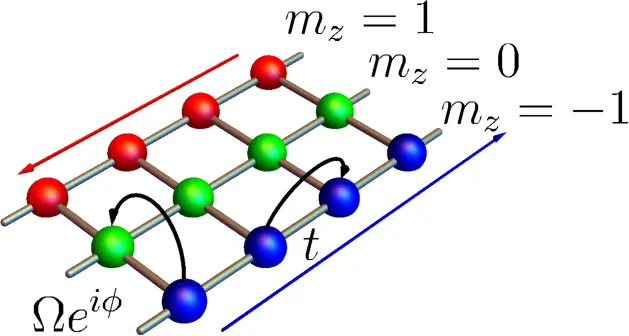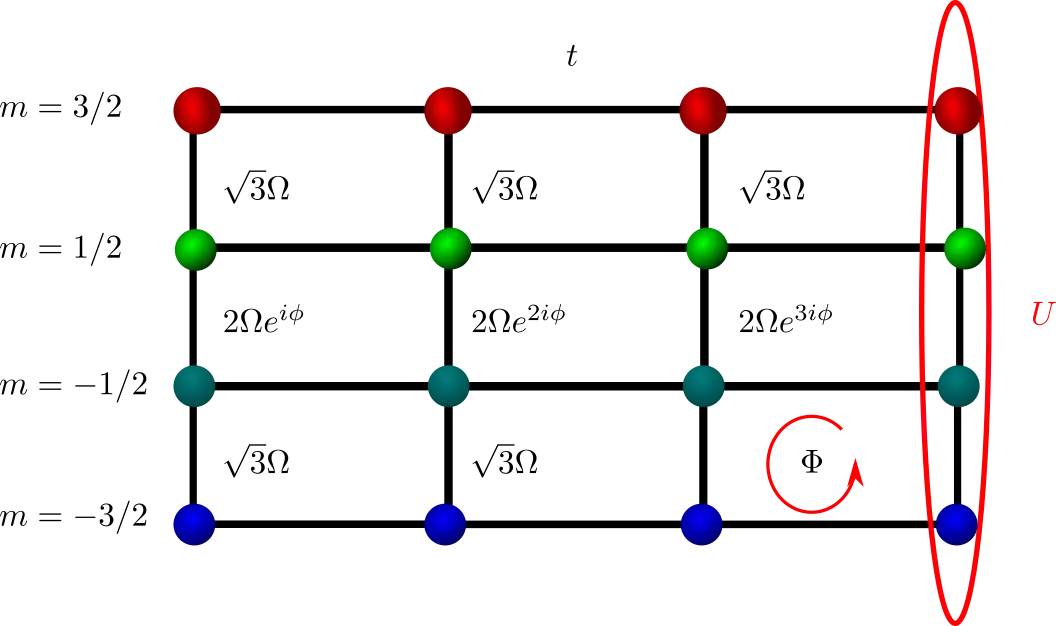Synthetic Dimensions

In Plain English
The idea of synthetic dimensions is to simulate a spatial dimension (like length, width or height) using a different property of the physical system.
The aims are manifold, this might simply allow higher control over this artificial dimension making it more suitable for study, it might also allow to construct a dimenion with properties not present in a "real" spatial dimension, and it can also be used to access dimensions not usally possible (say 4-dimensionsal or 5-dimensional physics in our 3-dimensional world).
A natural question is to ask what we demand of this "property" to call it a "dimension". At its most basic we simply want to physical system to be able to "move" in this synthetic dimensions, i.e. the same way we can move an object through 3-dimensional space, we want to move the system through the artificial dimension. As a simple example imagine an object, like a lamp, that can change its brightness, if we have a switch to continously change the brightness, we could call it a synthetic dimension and characterise the system by its position in x,y,z and brightness space. In addition to this continuous dimension, one can also consider discrete dimensions, in which one can only move to a few points, the equivalent of a lamp with a few fixed brightness settings.
One may ask if these synthetic dimensions also have novel properties that are genuinely different from our typical real dimensions. One aspect in which they differ are the form of interactions, which are usually local in real space, but can be infinite-range in synthetic dimensions.
Research
